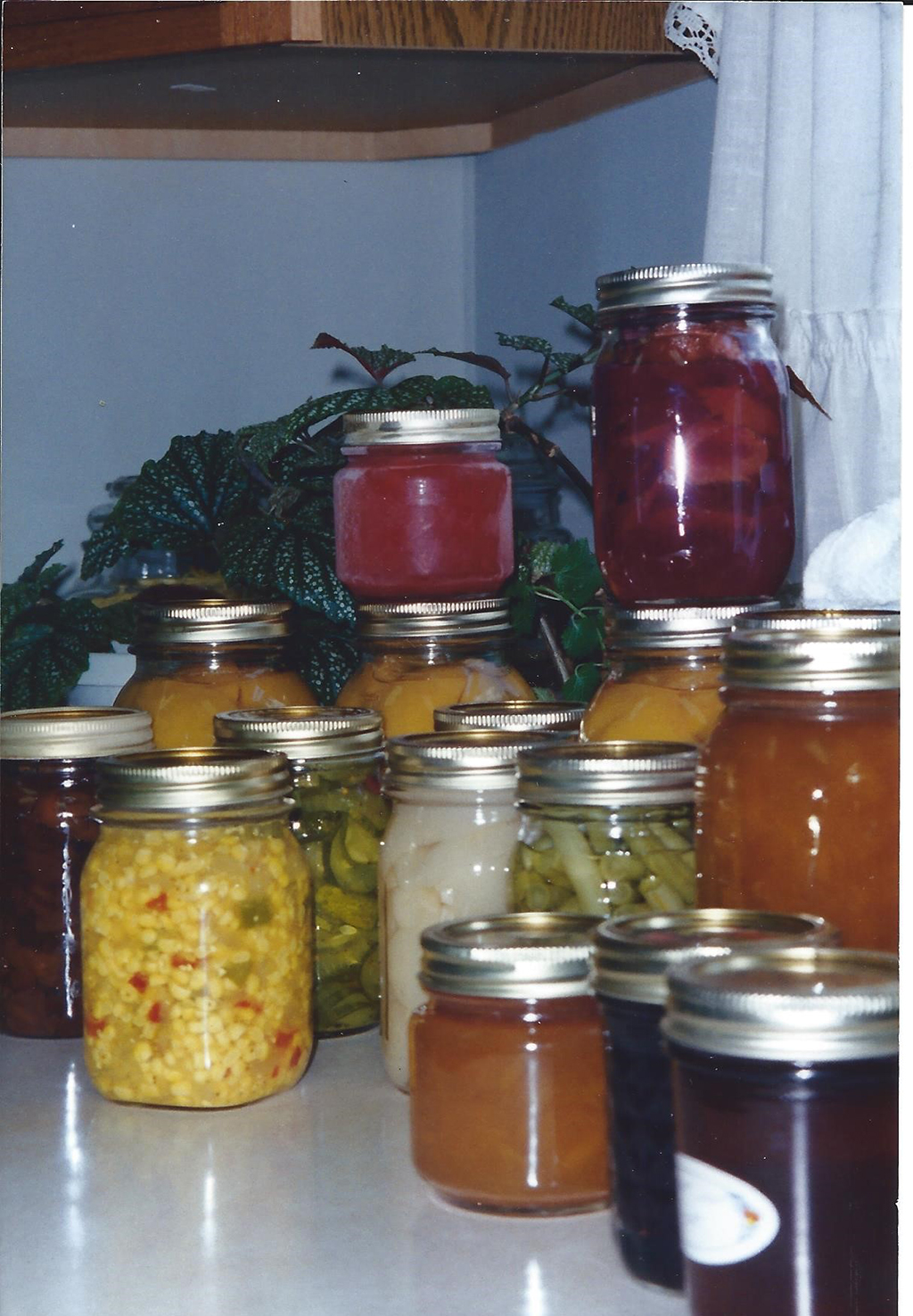It was a simple yet intense sound, a pop. Not like the corn kernels popping for a bowl of popcorn. Nor like the cork being removed from a wine bottle. No, this pop, this patiently awaited sound had its own tone. Metal and rubber on glass. Hot metal cooling down and creating a vacuum. Pop, pop, pop. Three pints of pickled beets sealed.
If you’ve ever canned, you know that sound. Whether you’re aware of it or not, once the hot jars come from the canner, you listen in anticipation of that pop.
As children we stood around or sat on the stairs close by to hear it. Running to mom to report was as pleasant a chore as helping pick and clean whatever went into the jars. We knew it was a very important sound of summer. It meant food during winter months, months when dad’s painting and brick-laying work was slack or non-existent.
We froze foods too, after mom and dad could afford a freezer. We knew about dried foods but never did that process. Today more and more are turning to dehydrators for a healthy and easy way to preserve foods. Recently we purchased dried cherry tomatoes at the Enon Farmers Market to get a better look at this shriveled food bounty we have yet to do for ourselves.
It is perhaps the oldest method of food preservation. Greeks and Romans dried grapes and peas. Persians dried dates and figs. Chinese dried fish and sea vegetation. Native Americans dried corn and squash, besides meat, fish and herbs. Dry food items include those things plus nuts, mushrooms, breads and pastas. First used was the sun and wind, then smoke houses and ovens, then electric dehydrators and freezers.
Canning on the other hand is only about 200 years old. Nicolas Appert is said to be the inventor of the canned method of food preservation. He began his experiments in the late 1700s and by 1803 his canned meats and vegetables were on their way via ocean voyages by the French Navy for testing purposes. By then the tin can had been deemed a stable container. After the global depression of 1873, the United States was exporting canned goods around the world.
Tin cans were eventually replaced by glass jars and zinc lids (later on came the two-piece metal lids of today) for the home canner. Hence, we have the pleasure of the sound of popping closures on our preservation endeavors today.
To use the dried tomatoes we purchased, we had to either put them into liquid which was the recipe, i.e. soup or stew or we needed to rehydrate them. To do that we found two ways. Either cover them with liquid (water, wine, juice) and let set for at least sixty minutes or cover with a one-to-one ratio of vinegar and boiling water, letting them soak for 10 minutes. Using the vinegar solution, we then drained and mixed them with olive oil to cover, garlic, rosemary. In a jar with a tight fitting lid they were refrigerated for at least 24 hours. They were ready to use in any recipe calling for a savory tomato flavor, especially nice in pasta dishes.
Corn is the second most popular vegetable to can, after tomatoes. Here are a couple of recipes using fresh and/or canned corn. Whatever way you choose to preserve the garden and orchard for winter, always follow the latest canning guidelines for food safety.
And smile when you hear that pop!
Fried Corn
-
4 cups cooked fresh corn
-
3 tablespoonis minced green pepper
-
Salt & pepper
-
4 tablespoons butter or olive oil
Combine corn, green pepper and seasonings in large skillet in which the butter has been melted. Cook over medium heat, stirring often to prevent scorching. Cook until corn just begins to turn golden tan. Serve hot. Variations include adding onions, garlic, using raw corn cut from cobs and cobs scraped down to include the milky juices. Some people prefer to add a bit of sugar.
Baked Corn
-
½ cup chopped onion
-
½ cup chopped green pepper
-
3 tablespoons butter
-
2 tablespoons flour
-
Salt to taste
-
Dash of paprika
-
¼ teaspoon dry or prepared mustard
-
1 cup milk
-
½ cup dry bread crumbs
-
1 egg, beaten
-
3 cups fresh corn, cut from cobs
-
½ cup cracker crumbs
Brown onion and pepper in 2 tablespoons of the butter. Add flour, salt, paprika and mustard. Stir until blended well and add milk. Cook over low and stir until thick. Remove from heat. Add bread crumbs which have been browned in the remaining butter. Add corn and egg, mix well. Pour into greased baking dish. Sprinkle with cracker crumbs. Bake in 375 degree oven for about 30 minutes. Variation: cheese may be added, other seasonings such as garlic, other toppings such as crushed potato chips may be used.
Corn-Tomato Skillet
-
1 small green pepper, seeded and chopped
-
½ cup chopped onion
-
2-4 tablespoons butter
-
1 teaspoon salt
-
1 teaspoon sugar
-
Dash of pepper
-
4 fresh tomatoes, peeled, sliced
-
2 cup fresh corn cut from cobs
In large skillet, cook green pepper and onion in butter until soft. Add rest of ingredients, cooking until vegetables are tender and liquid from tomatoes is evaporated. Stir often.
Contact Connie at This email address is being protected from spambots. You need JavaScript enabled to view it. or Box 61, Medway, OH 45341


